California native plants to dye for
By Zoe Vavrek
Marin Park Stewardship Summer Youth Intern
In ecosystems all over the Golden Gate National Parks, you can find exquisite palettes of color and texture. As volunteers come out each and every day, they work to re-paint these colors back into the canvas of the land. The native plants that are being woven back into the landscape hold colors deep within that can be unlocked when placed into a simple pot of boiling water. Read along to learn about some of the natural dye plants native to California and many of the Golden Gate National Parks.
Reminder: It is prohibited to take things such as plants or rocks out of a national park site.
However, it is encouraged to mirror the native plant ecosystems you see at your local national park at home by planting them in your garden or landscaping with them. Get excited to plant your own parks! Making a small natural dye garden can be one of the greatest sources of creativity in your life. These plants can unlock a variety of natural fashionista projects such as giving new life to an old t-shirt you never wear by re-dying it with a beloved native wildflower! If we plant native dye gardens in our communities, together we can both activate our creative juices and create new habitats for native wildlife. Let’s gather inspiration and delve into the cross-pollination of creativity and restoration!
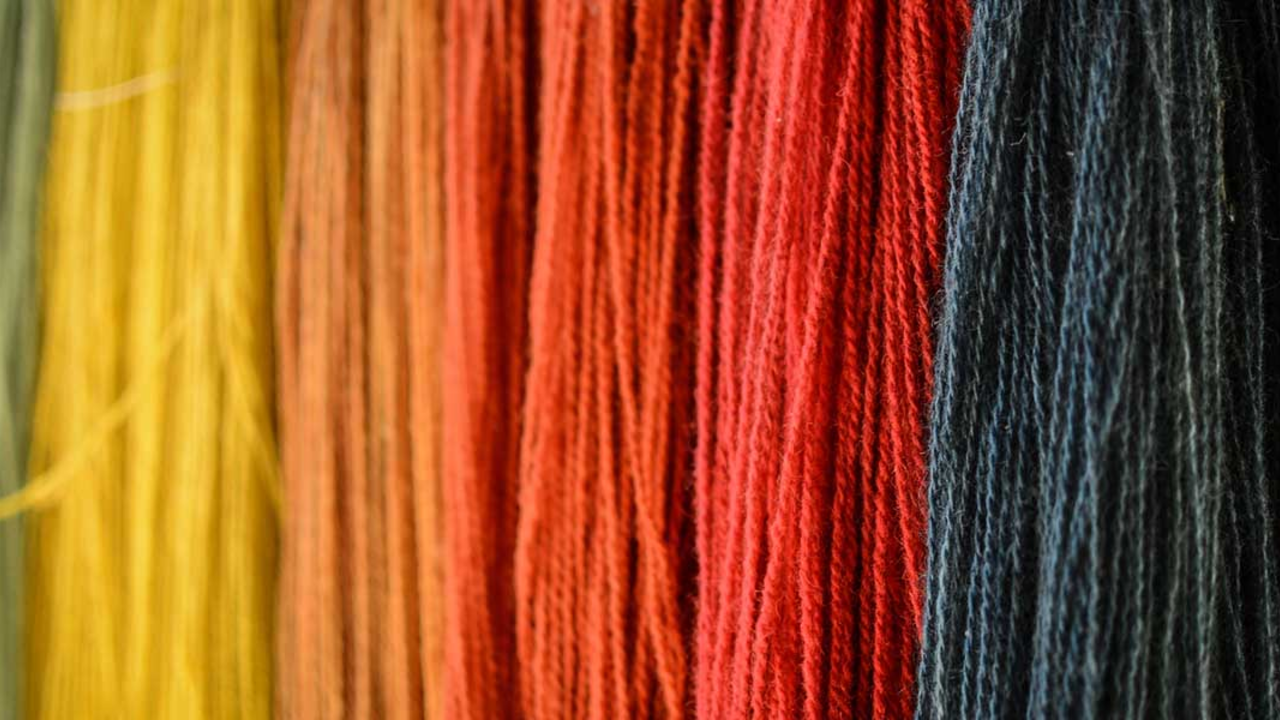
I started conducting natural dye projects of my own as an academic intern last year for a non-profit called Fibershed. Through the course of that internship I learned a lot about the fashion industry and came out of it as a young sustainable fashion activist looking to start the conversation with my peers about the impacts of their fashionista ways. After learning more about the environmental and social-justice impacts of the fashion industry as a whole, I couldn’t help but feel helpless and angry. From micro-plastic fibers and chemical dyes polluting our beloved waterways to unjust and unfair labor conditions for the workers, I couldn’t believe how unsustainable and unfair this fashion industry had become. But then I discovered the art of natural dye and found it to be one of the most enjoyable and exciting ways to express my sustainable fashion activism. I learned a lot about how to dye from natural materials from the amazing women at Fibershed. Two of the most important things I learned were that anyone can naturally dye (the simplest of food scraps, such as avocado pits, can be some of the best materials to work with) and making a natural dye can be as easy as brewing a strong tea for your fabric to steep in. From my projects dying with plants such as marigold, oak gall, onion and pomegranate in my kitchen after school, I fell in love with the art of natural dye. This is why, as my mentors at the Marin Parks Stewardship summer internship passed on their knowledge of the plants native to our sites, I always had the same question in the back of my mind: What colors are hidden in these native plants?
As I delved into research about California native plant dyes I uncovered a surprising rainbow of hues from many of the native plants I had been studying at our restoration sites such as Muir Beach.
Maintaining the longevity of your colors
One of the most important aspects to understand when first being introduced to the world of natural dying is the idea of a mordant. Mordant comes from the French word mordre which means “to bite.” This can be applied to natural dying in the context that the mordant is helping the dye to bite (or adhere) to the fiber. Mordanting your fibers is a very important step to be done in the natural dying process so the colors that you worked so hard to harvest and extract stay in your fibers for a long time. There are two types of mordants that one can use. The first and more ideal form is to use plants with natural tannins to self-mordant the fiber. In other words, as you prepare your dye bath with this plant, it will have the mordant built in. A great example of a plant material that is a great self-mordantor is avocado pits (produces a beautiful range of light-pink to dark red).
Basic instructions
To extract these colors and create a dye bath, the basic procedure is to simmer the plant matter in water for a couple of hours, soak overnight to deepen the hues and mordant the dye or fiber before you meet the two together (alum is a very common mordant). Other methods of extraction include soaking the plant matter in water in the sun (solar soak), extract in cold water and mashing up the materials before creating the dye bath. One can work to prepare a dye bath for as little as a few hours up to a whole week. Once I spent an entire week simmering down a few dye baths on my kitchen stoves as my parents looked at me like the strange child I am. Note that the type of pot you decide to use may affect the color as the compounds in the plant matter may react with pots like aluminum.
Purple
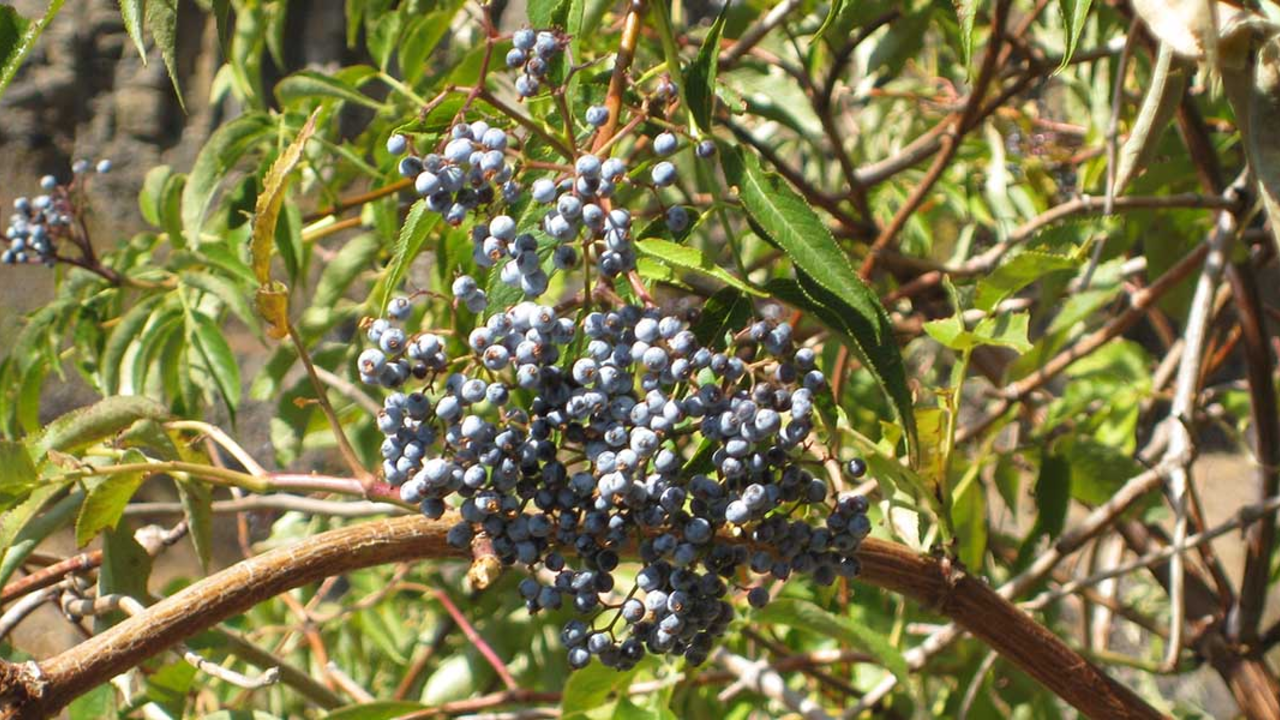
A California native plant that you have to meet if you are all about red and pink hues is the Blue Elderberry (Sambucus nigra ssp. caerulea) and the Red Elderberry (Sambucus racemosa). The natural dye bath one creates, without the addition of any acid or base, is a beautiful natural soft mauve-purple. Elderberries are exciting to experiment around with because of their anthocyanins, the compounds that give these berries both their antioxidant effects and sensitivity to pH. With the addition of an acid (such as vinegar), this bath can transform to shades of pink, raspberry and magenta. On the other hand, with the addition of an alkali (such as sodium carbonate), the bath can turn a dusty grey. Elderberry is one of the best native plants to inherit into your garden as it is a very resilient bush that can thrive in a variety of soils and types of weather.
Orange
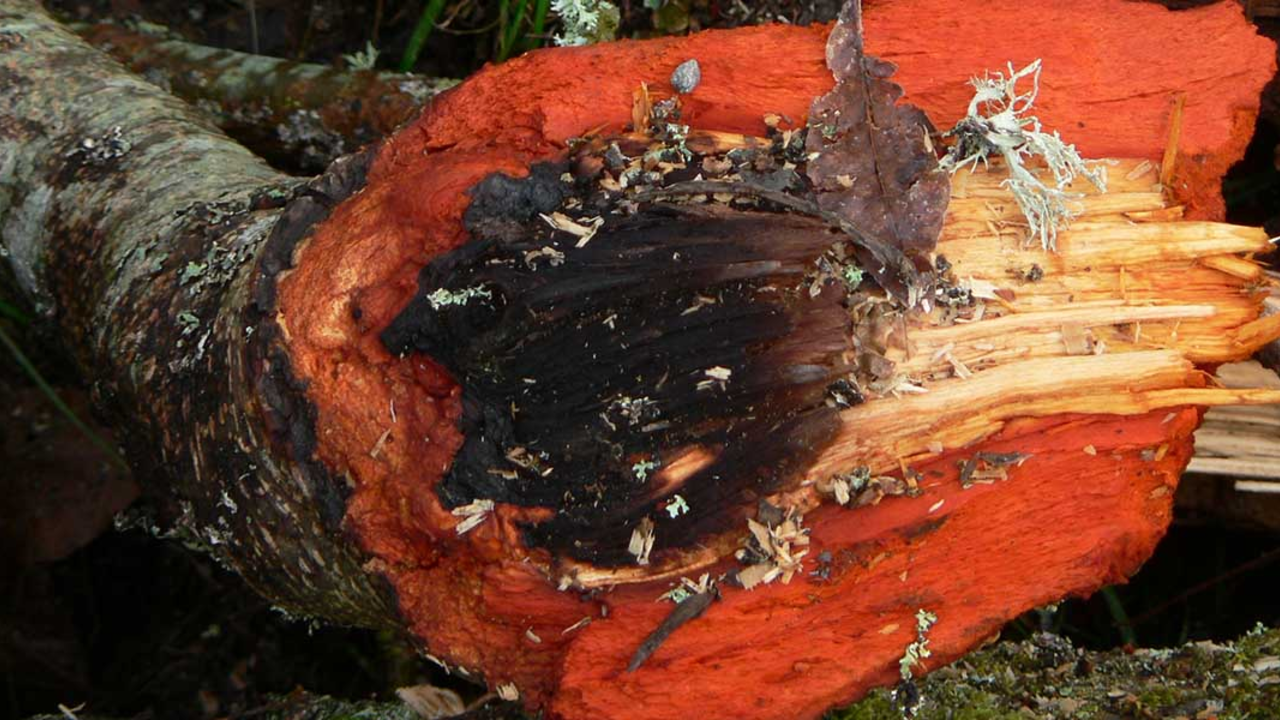
Alder trees, specifically the red alder (Alnus rubra) have a reddish-brown inner-bark that can produce a beautiful orange dye. This inner bark contains tannins that lead it to produce a beautiful rusty orange to brown color and can work to self-mordant. This dye bath can be enhanced with an alum mordant and iron after-dip which will turn it greyish green. Some have experimented with using other parts of the alder to dye with such as the leaves and cones.
Yellow
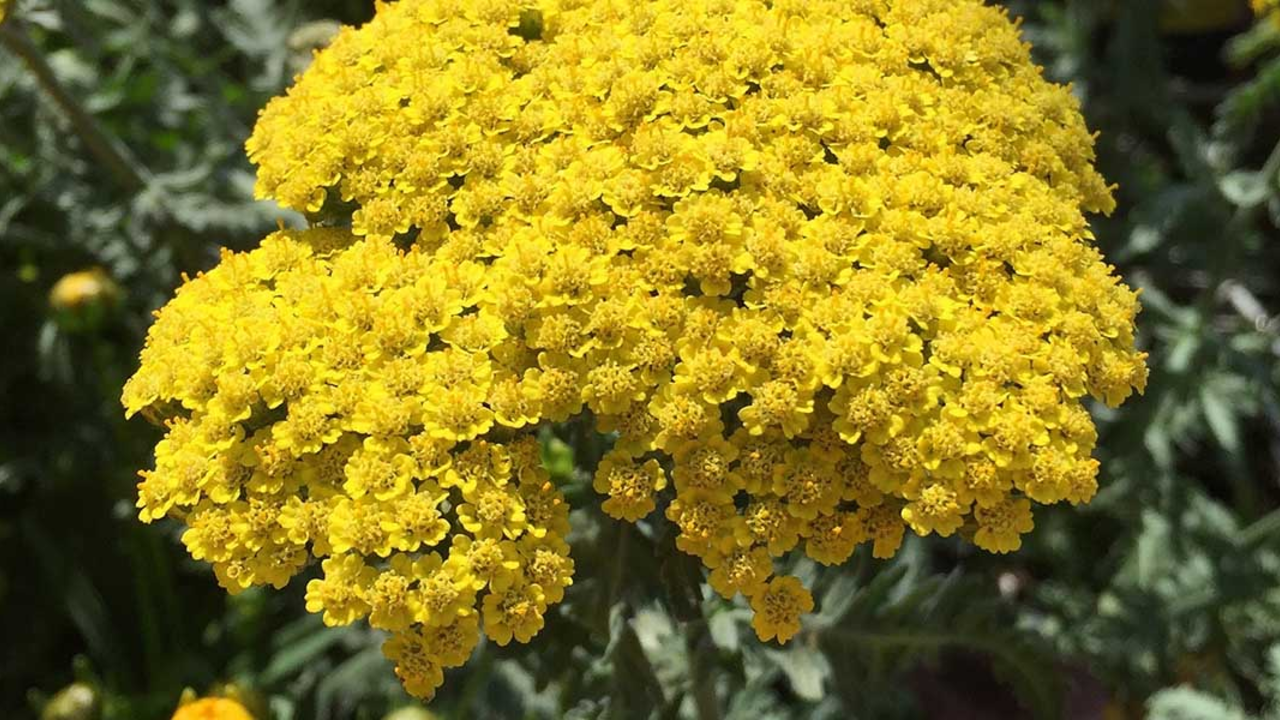
Yarrow (Achillea millefolium), is a native plant that should not only be known for its medicinal properties but also its dying abilities! Yarrow’s plant tops can be harvested from spring to fall. These flower heads will produce a yellow dye when boiled. Hues such as an olive-green can be found when dipping the textile in an iron bath after the initial dye. Stalks of the plant can also be used in a natural dye bath, just be sure to leave a couple inches of the plant to allow regrowth. Bicarbonate can be used to turn the dye baths more yellow.
Green
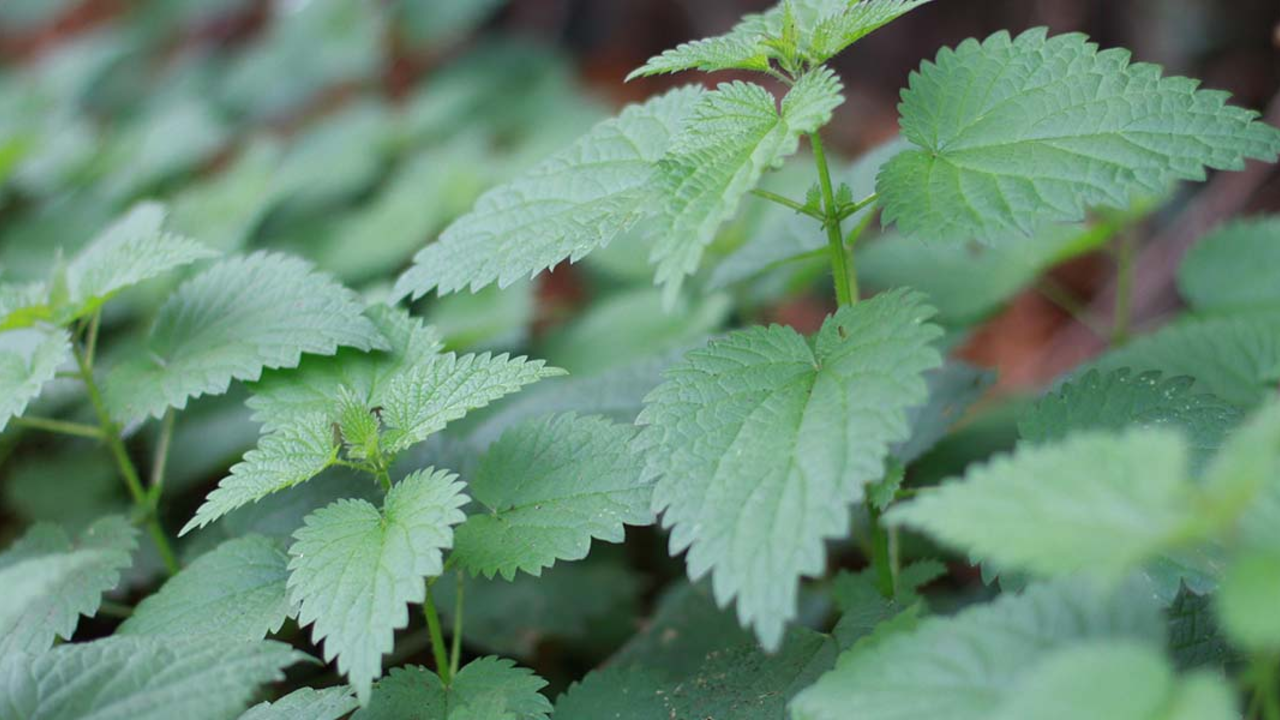
Stinging nettle (Urtica dioica), although not the most friendly native plant, can create quite striking dark green color with the possibility of grey and brown hues. After gathering the leaves, steeping them in a pot of hot water can work to coax the color out of the leaves (it is important not to cook the leaves as the vibrancy of the color will be less pronounced). Leaving this dye pot to steep for a couple of days can transform and deepen the dye. The dye will darken due to the natural iron in the nettle leaves.
Brown
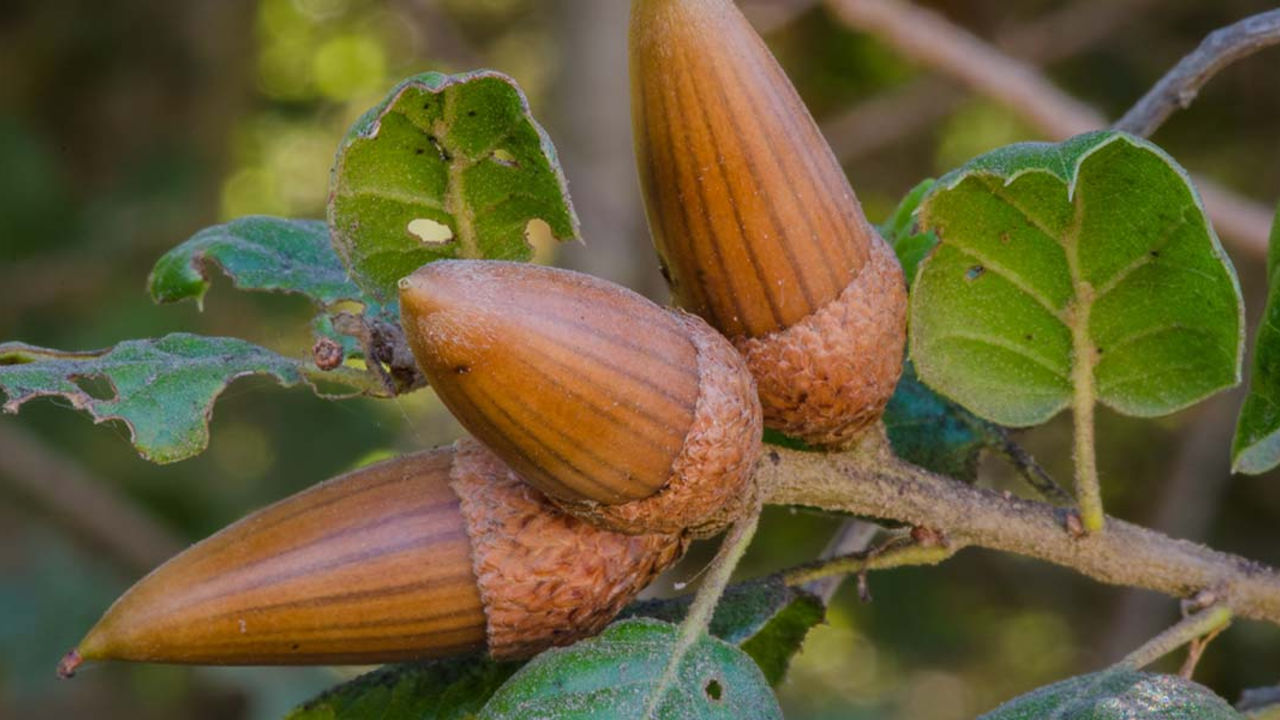
The acorns that oak trees produce can be a great source of a natural dye. On their own they dye golden brown hues and when the fabric is dipped into an iron bath (made by placing rusty nails in a jar with one part vinegar and two parts water and letting it sit for a few weeks), gray and charcoal shades can be found. Oak trees that are native to California include the Blue Oak (Quercus douglasii), Valley Oak (Quercus lobata), Oregon White Oak (Quercus garryana), Engelmann Oak (Quercus engelmannii), Coast Live Oak (Quercus agrifolia), Interior Live Oak (Quecus wislizeni), Canyon Live Oak (Quercus chrysolepis) and the California Black Oak (Quercus kelloggii). Rich with tannins, acorn dye baths are self-mordanting. Set the acorns in boiling water and let them steep for one to three days. This dye bath can become so intense that it can be used for two or more dying sessions.
Black
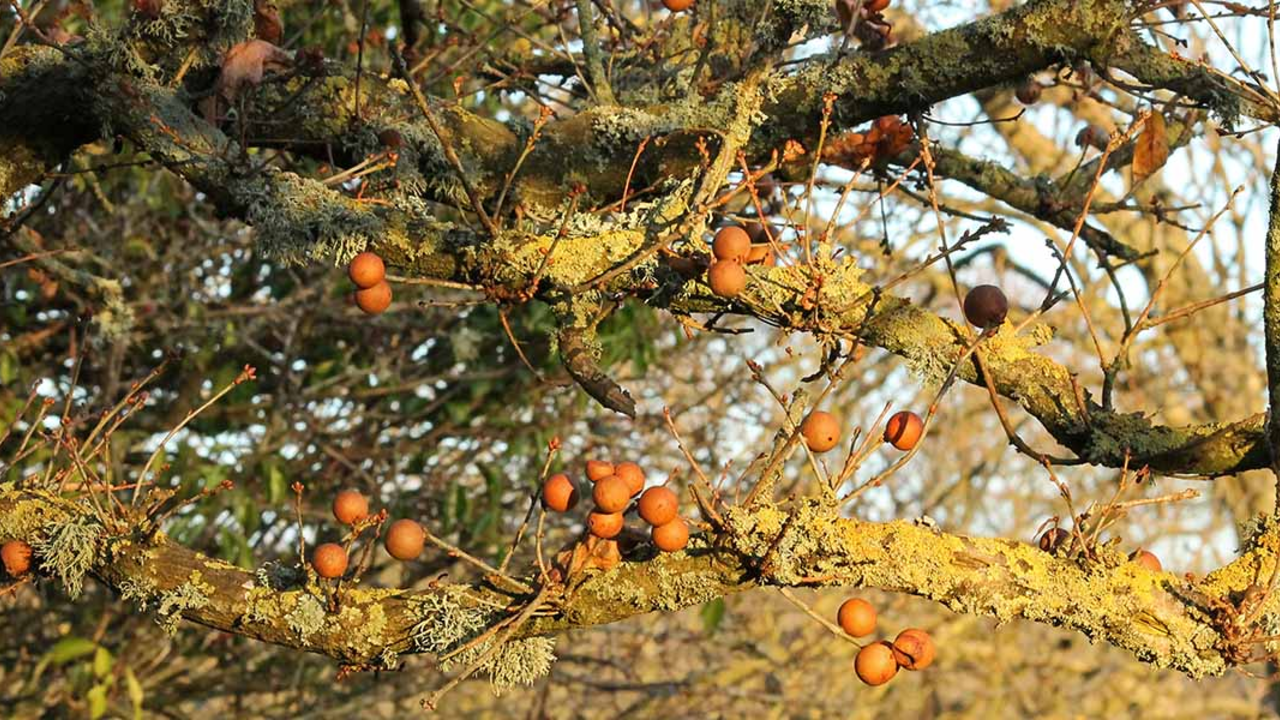
Speaking of oak trees (refer to brown dye item above), another source of material for a dye bath that can be collected from the tree is the oak galls. Oak galls form when wasps lay their eggs in newly formed leaf buds and the plant hormone and wasp chemical interact. The gall works as a kind of protective edible crib around the larvae as it ages. The dyes that can be extracted from the gall range from brown and grey to jet-black. Oak galls are another sources of awesome tannins and therefore are self-mordanting. The best way to extract the gall’s color is to smash it into a fine powder, either putting it in a bag and using a hammer or an old fashioned mortar and pestle.
Now that you have had a taste of some of the amazing hues California native plants hold inside, I invite you to go out and plant some at your home! Growing, harvesting, extracting and dying with these plants takes practice, and there are a lot of resources out there. I invite you to spread the word about the magic of natural dye plants as one of the most exciting solutions to this mess of a fashion industry we are in. Before you “dye-ve” head first into your natural dye projects, read below for some wise advice from artist Chelsea Heffner:
“Working with plant-collected dyes takes a great deal of patience, and often feels like a strange sort of alchemy. Color can vary drastically depending on the variables presented by nature and process. Water quality, season of harvest, length of dye bath and mordants used, are just a few of the variables that make dyeing with plants an endless experiment. For those used to controlling outcomes, this is a zen exercise”
SOURCES:
http://www.woollenflower.com/tag/dyeing-with-elderberries/
https://calscape.org/Sambucus-nigra-ssp.-caerulea-(Blue-Elderberry)
https://www.thesprucecrafts.com/make-natural-orange-dyes-for-fabric-214…
http://the3fs-catw.blogspot.com/2015/09/dye-pot-days-red-alder.html
https://www.motherearthnews.com/diy/crafting/diy-yarrow-yellow-dyes-ze0…
https://hedgerowweaver.com/2017/05/04/yarrow/
https://rebeccadesnos.com/journal/2018/04/dyeing-with-nettles/
https://www.ontheacre.com/home/2018/12/26/acorndye
http://plantspeople.blogspot.com/2012/04/oak-gall-dye.html
https://www.slideshare.net/cvadheim/california-colors-natural-dyes-2014…
https://www.slideshare.net/cvadheim/easy-natural-dye-sources-from-ca-ta…